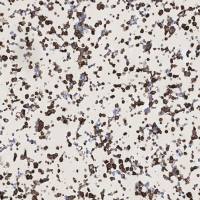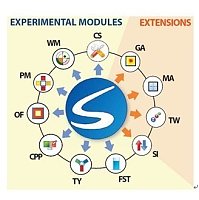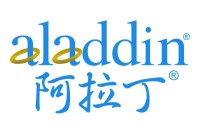CLONING FROM BEGINNING TO END 详细的克隆操作过程【UCSF】
互联网
Steven Finkbeiner,Departments of Neurology and Physiology,UCSF http://gweb1.ucsf.edu/labs/finkbeiner/Protocol/protocol_list/cloning.shtml
DIGEST:
1.Digest 10 - 20μg DNA to isolate either the desired insert or vector.
2.After digesting,sometimes it is necessary to dephosphorylate the ends of the vector so as to prevent religation before the insert can ligate to vector.If this is necessary:
VECTOR DEPHOSPHORYLATION (AP/CIP):
a.after digesting (it is best to do this before running on the gel and Gene Cleaning so no re-ligation can occur during these steps),precipitate the DNA with EtOH (2X the original volume)and NaOAc (10% of original volume).
b.Place at 4 degrees for 10',then spin at 4 degrees at 13,000 rpm for 20'.
c.Once you have a pellet,resuspend with dW
d.Add Alkaline Phosphatase with buffer (see below).1μg DNA requires a 10μl reaction (scale up as desired)...
Reaction should end up: 1 unit Alkaline Phosphatase(AP or "CIP")/ 1μg DNA
Dilute 10X buffer to 1X
Bring up to volume with dW
example: For 20μg pellet- resuspend in 70μl dW
Add 20μl AP (1unit/μl)
Add 10μl 10X buffer (so 1X)
3.Add dye (15% Ficoll,0.25% Bromo Phenol Blue,0.25% Xylene)at 1:10 to make digests heavy enough to sink into gel wells.
4.Run the digests out on a gel made with "Seakem" brand agarose (it is higher quality than technology grade)at 80-100V,and look at the bands under UV light.Cut out appropriate bands and Gene Clean them (SEE BIO 101 gene clean kit for instructions).
5.If it is necessary to make the ends of the cut insert/vector "blunt ended" for the ligation,now is the time to do it.For this,T4 polymerase is used in combination with the necessary nucleotides (ATGC)to fill in the "sticky ends" with base pairs.The protocol is as follows.
T4 POLYMERASE REACTION (BLUNT ENDING):
1.For 800ng of a gene cleaned fragments,The reaction is:
oT4 polymerase
o10X buffer
oBSA
oGATC
odistilled water to a final volume of 20μl
2.Allow reaction to proceed for 20' in a 16 degree water bath.
3.Bring volume up to 100μl with distilled water and phenol chloroform extract.
-add equal volume of phenol chloroform,vortex and spin for 5' at 4 degrees.Transfer supernatant to new tube.
4.Add 10μl 3M NaOAc.Vortex.
5.Add 220μl 100% EtOH.Vortex.
6.Place on ice 10' and spin @ 13,000 fro 15' @ 4 degrees.
7.Discard supernatant and resuspend pellet in 10μl TE pH 8.0.
LIGATION:
1.Once you have the Gene Cleaned DNA ,put together the ligation as follows.
2.Combine the DNA so that you have a ratio of insert to vector at 3:1.The rest of the reaction consists of T4 Ligase,10X Ligase Buffer,and distilled water.A typical recipe for one reaction is :
10X Ligase Buffer1μl
T4 Ligase0.5μl
Vector1μl
Insert3μl
Distilled water4.5μl (or bring to 10μl final volume)
3.Mix reactions and put in a 16 degree water bath overnight.It is good to include a reaction mix with vector alone to make sure you have something other than religated vector once you transform and plate them.
TRANSFORMATION AND PLATING: See Transformation Protocol
MINIPREP and DIAGNOSTIC DIGEST: to see which clones worked and can be maxiprepped then used for transfections.









